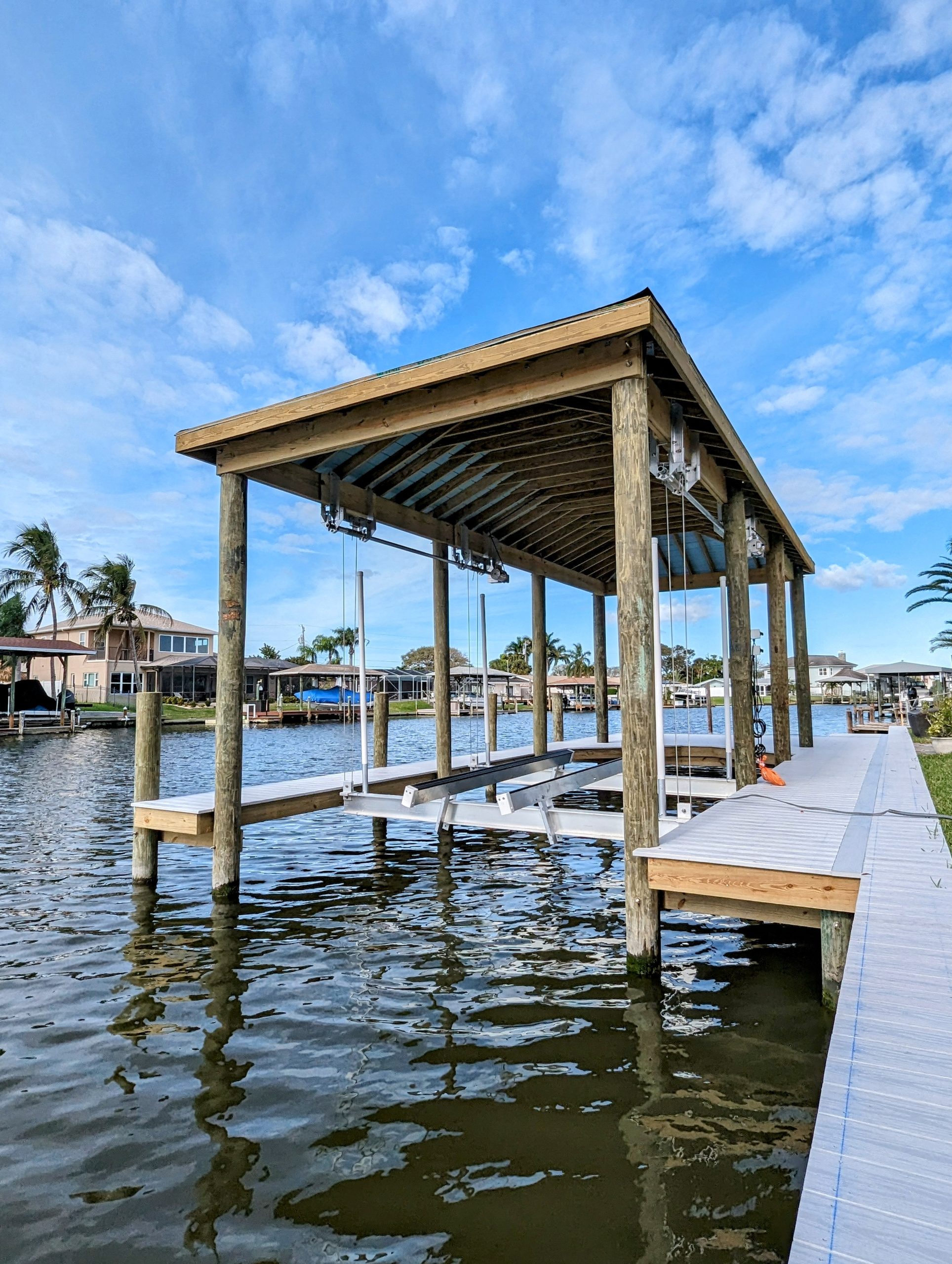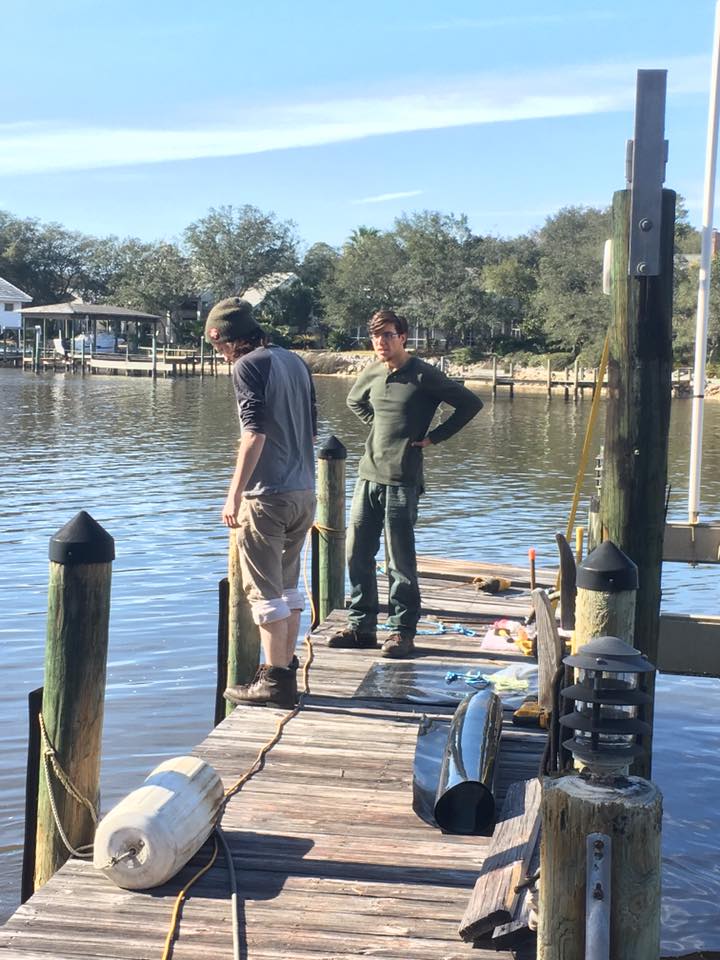Reliable Dock Repair Service Techniques: Making Sure Structural Stability
Guaranteeing the structural integrity of anchors with efficient repair work techniques is paramount for the long life and safety and security of marine facilities. This involves a multi-faceted strategy beginning with extensive evaluations using innovative innovations like sonar tools and from another location operated vehicles (ROVs) to detect both noticeable and concealed damages. Ultimately, choosing the right fixing products, such as corrosion-resistant alloys and composite materials, is critical for longevity. Structural reinforcement techniques, including the execution of cross-bracing systems and load-distribution plates, play a crucial role in mitigating stress and anxiety points. Nonetheless, the relevance of these techniques comes to be apparent when discovering sophisticated fixing techniques and preventative upkeep methods.
Assessing Dock Damages
Analyzing dock damages is a critical primary step in making sure the architectural stability and safety of any type of docking center. This initial analysis involves a thorough evaluation to identify both surprise and visible problems. Key aspects to examine consist of the dock's structure, pilings, outdoor decking, and equipment. Each element needs to be scrutinized for signs of wear, rot, corrosion, or other kinds of deterioration that might jeopardize the architectural stability.
Architectural designers or qualified inspectors generally perform these assessments making use of specialized devices and methods. Underwater inspections could utilize sonar tools or from another location operated lorries (ROVs) to discover immersed damage. Over water, visual inspections are enhanced by utilizing moisture meters and various other analysis tools to reveal underlying problems not immediately noticeable to the naked eye.

Deciding On Fixing Products
Choosing the appropriate fixing products is a crucial step in the dock remediation process, one that straight influences the longevity and performance of the fixed structure. Material choice should be driven by factors such as ecological conditions, load-bearing requirements, and compatibility with existing dock parts.
Along with timber, composite products are progressively popular as a result of their durability and low upkeep demands. Compounds, normally made from a blend of plastic and timber fibers, offer exceptional resistance to rot, insects, and UV damages. For metal anchors, choosing corrosion-resistant alloys such as galvanized steel or marine-grade light weight aluminum is vital to prevent corrosion and ensure structural honesty in saline water conditions.
Epoxy resins and marine-grade sealers are indispensable for repairing fractures and securing joints, giving a waterproof obstacle and boosting the dock's total strength. By thoroughly picking high-quality materials, dock repair services can accomplish durable results, thus securing versus future destruction and making certain safe, dependable use.
Architectural Reinforcement Methods
Effective structural support strategies are important in making certain the security and durability of dock repairs. This method is specifically efficient for docks exposed to heavy lots or extreme environmental problems.
One more vital technique is the application of fiber-reinforced polymers (FRP) These products use high strength-to-weight ratios and excellent resistance to deterioration, making them optimal for reinforcing wood or concrete docks. FRP can be used in strips or sheets and bonded with epoxy materials to enhance architectural stability.
Supporting and anchoring systems additionally play a critical function in structural support. Cross-bracing, using steel or wooden beam of lights, can counteract side forces, minimizing swaying and activity. Anchoring systems, such as helical piers or driven heaps, offer a secure foundation by moving lots to deeper, extra steady dirt layers.
Lastly, the assimilation of load-distribution plates can help distribute weight extra uniformly throughout the dock's surface, alleviating local tension factors. These techniques jointly make certain that docks stay durable and safe, capable of standing up to the roughness of their operational atmosphere.
Advanced Fixing Methods

Another advanced technique includes underwater welding, which allows for repair work to be carried out without the requirement to dewater the area. This method is particularly helpful for attending to architectural issues in submerged dock components, ensuring minimal disturbance to procedures. Improved welding techniques, coupled with robotic systems, supply accuracy and dependability, thus extending the life-span of the dock.
In addition, cathodic security systems are executed to prevent corrosion in metal dock structures. By utilizing sacrificial anodes or pleased present systems, these strategies properly minimize the electrochemical procedures that result in material deterioration.
Last but not least, advanced monitoring modern technologies, such as architectural health monitoring (SHM) systems, offer real-time data on the condition of dock frameworks. These systems allow aggressive maintenance and timely interventions, eventually ensuring the long-term architectural stability of the dock.
Maintenance and Prevention
Upkeep and prevention are basic ideas that underpin the long life and security of dock frameworks. Regular assessments are paramount, permitting early detection of damage, potential weak points, and ecological impacts. A positive strategy, involving regular look for corrosion, rot, and structural changes, mitigates expensive fixings and prolongs the dock's operational life.
Safety nets ought to consist of using safety coverings to steel parts to guard against rust and utilizing cured timber to stand up to decay. Additionally, making sure correct water drainage and air flow can prevent water accumulation, which is a typical reason of architectural destruction. Including top quality materials and adhering to producer guidelines during building and repair service stages likewise play critical duties in boosting durability.

Educating workers in dock maintenance ideal methods guarantees regular application of safety nets. Leveraging technological breakthroughs, such as drones for assessments and sensors for real-time monitoring, can better improve maintenance initiatives. By prioritizing upkeep and prevention, dock proprietors can make sure structural honesty, operational safety and security, and economical management over the dock's life-span.
Final Thought
To conclude, preserving the structural stability of marine centers necessitates detailed dock repair strategies. Comprehensive examinations utilizing innovative tools discover both noticeable and concealed problems, while the option of suitable fixing materials improves longevity. Executing architectural reinforcement techniques addresses stress and anxiety points efficiently. Advanced fixing techniques, combined with routine upkeep practices, guarantee the dock continues to be safe and operational under varied ecological conditions. Embracing these methods dramatically prolongs the life expectancy and capability of aquatic infrastructure.
Making certain the structural stability of anchors with reliable fixing strategies is extremely important for the longevity and safety and security of aquatic centers.Picking the proper repair service products is an essential step in the dock remediation process, one that directly affects the long life and efficiency of the repaired structure.Reliable architectural support methods are crucial in guaranteeing the stability Look At This and long life of dock fixings. By focusing on maintenance and prevention, dock proprietors can make sure structural integrity, functional have a peek here security, and affordable management over the dock's life-span.
In final thought, keeping the architectural stability of marine centers requires extensive dock repair strategies.